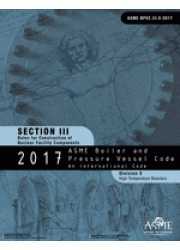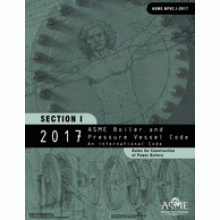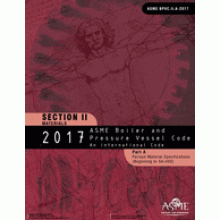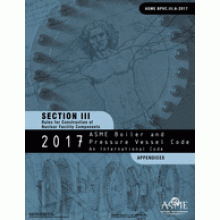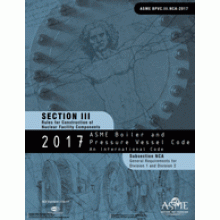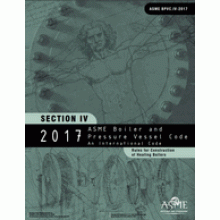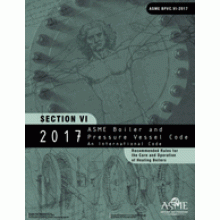ASME BPVC-III-5: 2017 Section III-Rules for Construction of Nuclear Facility Components-Division 5-High Temperature Reactors
Quantity:
-
Add to Compare
About the BPVC
Since its first issuance in 1914, ASME’s Boiler and Pressure Vessel Code (BPVC) has pioneered modern standards-development, maintaining a commitment to enhance public safety and technological advancement to meet the needs of a changing world. More than 100,000 copies of the BPVC are in use in 100 countries around the world.
Product Scope / Abstract
Division 5 of Section III of the BPVC provides construction rules for high-temperature reactors, including both high-temperature, gas-cooled reactors (HTGRs) and liquid-metal reactors (LMRs). These rules are for components exceeding the temperature in Division 1 and are meant for components experiencing temperatures that are equal, to or higher than, 700oF (370oC) for ferritic materials or 800oF (425oC) for austenitic stainless steels or high nickel alloys.
Importantly, Division 5 also contains the new rules pertaining to graphite core components. These new rules include general requirements, plus design and construction rules, for graphite. Irradiation effects on graphite are addressed, as are the features of probabilistic design reflected in the determination of graphite material strength properties.
Division 5 reflects new, safety-criteria approaches for nuclear power plants—accumulating rules conveniently into one, single book format. These rules have been updated and improved over those still in Code Case format.
Various industries are beginning to appreciate the unique advantages that exist with nuclear power plants that operate at elevated temperatures. For example, HTGRs can yield higher operating efficiencies, provide not only electrical power but also process heat for other industries, and can be designed to be passively-safe.
Careful application of this Section will help users to comply with applicable regulations within their jurisdictions, while achieving the operational, cost and safety benefits to be gained from the many industry best-practices detailed within these volumes.
Intended for those nuclear facilities and power plants that experience operating temperatures that exceed the limits established in Section III, Division 1. At this time, both high temperature gas-cooled reactors and liquid metal reactors are identified as being within the scope of these Division 5 rules.
Write a review
Your Name:Your Review: Note: HTML is not translated!
Rating: Bad Good
Enter the code in the box below:
Copyright © 2014 Engineering Standards Bureau. All Rights Reserved.
Developed By Zoom Into Web


